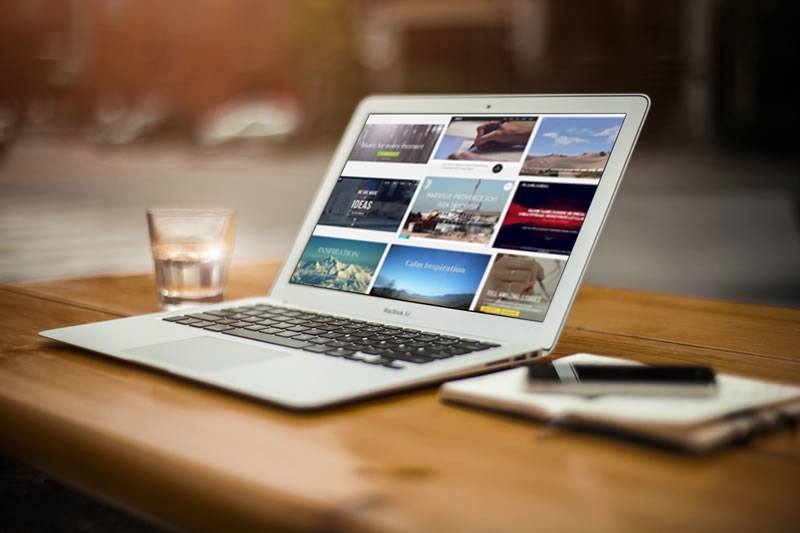How to create a website or a project for a client of mine that brings me concrete results? How do I understand if a site is having success or not? What are the actions to be taken to improve conversions? If you are interested in learning more, the information you will read below will be useful to you.
First of all, what is Conversion Rate? The Conversion Rate, the Conversion Rate is the ratio between the number of visitors to a page or a website and the number of visitors who have taken an action considered strategic, called conversion. This is the main objective of any website that does not want to be a simple business card.
Could be:
- The sale of a product or service
- A call
- The request for information or quote by filling in a form
- Subscription to the newsletter
- Signing up for a site with a reserved area for a fee
- Sharing content in social networks.
So how do you create a website that reaches a specific goal?
How to create a website that converts?
According to the numbers, there are at least two ways to increase a website’s conversions. The first is to increase the visits (keeping the conversion rate steady, as the number of visits increases statistically, conversions should also increase).
The second consists in improving the conversion rate, keeping the number of visits constant. It goes without saying, that to create a website that converts it is necessary to work on both fronts, both on visits and on the conversion rate, then on the user experience that lands on a page of the website.

Here’s how to create a website that converts taking both factors into account …
1. Open the doors of your site!
To make a website that leads to concrete results, it is first necessary to bring a critical mass of visitors to the site. Such as? Optimizing the website for search engines and through Pay Per Click and remarketing online promotion campaigns that lead to the site.
It is also important to use all available communication channels:
- Newsletter
- Social network
- Address at the bottom of company e-mails
- Address in offline communication media (catalogs, brochures, quotes, gadgets, etc.).
2. Improve the loading of your pages
In addition to working on the increase in visits, it is essential to improve the user experience on the site starting from its loading, which must be as fast as possible. For a visitor, waiting a few more seconds to consult a page is already a good reason to abandon it, turning elsewhere.
3. Clear your core business immediately
Whether it has only a few minutes or even hours available, the visitor wants to immediately understand where he is and immediately find what he is looking for. For this reason it is very important to create a logo and a home page that can immediately clarify the core business and the identity of the website.
4. Nice yes, but above all easy to use
To create a website that converts, aesthetics must always be placed at the service of usability. A website must not only be pleasant but also easy to navigate, content must be easy to find and information easy to read.
An intuitive menu, designed on the basis of the average user’s behavior, is a must, insert a search space and contact a professional copywriter for the drafting of texts according to the rules for formatting the speed reading and persuasive copywriting. It is important to use simple fonts and remember that sometimes a picture is worth a thousand words. He also speaks through photos, which must be professional, short images and videos.
5. Ask for action!
The call-to-action (literally “call to action”) is the set of texts and images, usually a button, which expressly asks the user to perform the action. The text of the call-to-action must be short, direct and persuasive, in a few moments it must convince the user to perform the action (“click here, call now, contact us immediately, buy today” are typical call examples) -to-action).
Even the colors of the button play a decisive role. The best colors for a call-to-action are:
- Orange
- The yellow
- The Red.
The blue is to be avoided, which could push the user to reconsider the action. Of course, the button should also be placed in the most visible area of the website, generally at the top or bottom right, depending on the flow of content.
6. Too much information, little information …
Too much information is equivalent to giving the user little information and in any case to make it confused and undecided about the action to be taken. Better to reduce the call-to-action to few and clear actions among which the user can choose in the maximum tranquility.
A useful exercise is to summarize the advantages the user gains from the completion of the action (buy today, save immediately – subscribe to the newsletter, you’ll be the first to know, etc.).
7. Analyze, analyze, analyze
To create a website that achieves the set objective, it constantly monitors visitor behavior and conversion trends, proceeds by trial and error, adjusts the site based on statistical evidence during the work. Take seriously the realization of A / B test (also called split test) to identify which version of a page, button or text gets the best performance.
Share your experience?
What actions did you take and that led to an improvement in the goals you set for yourself to reach for your site or that of your client? Let’s talk about it below in the comments, share your experiences in the field to collect other useful and valuable tips that will increase the value of this post.


